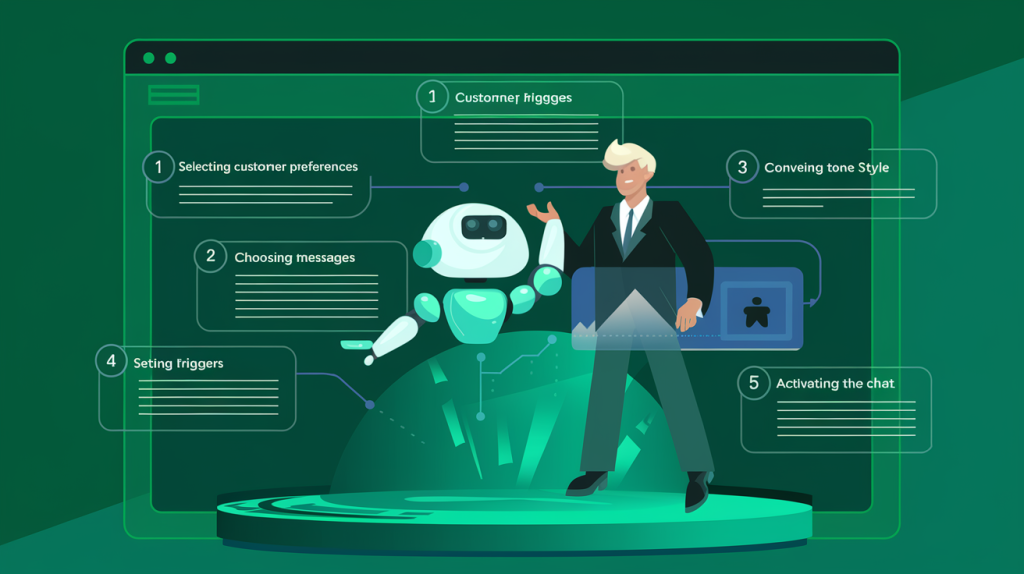Create Personalized Conversations (5 Easy Steps)

Have you ever felt like you’re just another number when interacting with a brand? Maybe you’ve received generic emails or responses that made you feel like you weren’t being heard. You’re not alone. Studies show that 72% of customers only engage with personalized messaging, and 80% of people are more likely to buy from a brand that offers a personalized experience.
In today’s world, businesses need to do more than just send out mass messages—they need to create personalized conversations that connect with their audience on a deeper level. But how can you achieve this? Well, in this article, we’ll break down 5 easy steps to help you craft personalized conversations that will leave your customers feeling valued and heard.
Step 1: Get to Know Your Audience
Before you can tailor your conversations, you need to understand who you’re talking to. Customer segmentation is key here. If you don’t know your audience’s interests, preferences, or behaviors, you can’t personalize your communication effectively.
Here’s how to do it:
- Analyze past data: Look at past interactions, purchase history, or online behaviors to gather insights.
- Use surveys or polls: Ask your customers directly what they need or prefer.
- Create personas: Build customer profiles to guide your communication strategies.
By collecting this data, you can personalize conversations based on where the customer is in their buying journey and what they’re interested in.
Step 2: Use Their Name
It may sound simple, but using a person’s name in a conversation goes a long way in making them feel valued. In fact, studies show that people are 2.6 times more likely to open an email with their name in the subject line.
Here’s how to make it work:
- Email marketing: Personalize your emails by addressing the customer by name at the beginning of the message.
- Chatbots: If you’re using automated systems, make sure they address customers by their name as well.
- Social media responses: When responding to comments or direct messages, use the customer’s name to make the exchange feel more personal.
Even simple things like this can make a huge difference in building rapport with your customers.
Step 3: Tailor Content Based on Interests
Nothing feels worse than receiving content that’s irrelevant to you. If you’ve ever been sent an email about a product you have no interest in, you know exactly what we mean. That’s why personalizing content based on interests is so important.
Here’s how to tailor content:
- Product recommendations: Based on previous purchases or browsing behavior, suggest items that are similar or complementary.
- Email newsletters: Segment your email list and send targeted messages based on your customers’ preferences. For example, if someone frequently buys skincare products, send them personalized skincare tips.
- Dynamic content: On your website or landing pages, use dynamic content that changes based on the user’s behavior (like showing them products they’ve viewed before).
Personalized content helps your customers feel that you understand them, which increases engagement and conversion rates.
Step 4: Respond Promptly and Personally
One of the quickest ways to ruin a customer’s experience is by leaving them hanging. Delayed or robotic responses can make customers feel like they’re just another ticket number. Instead, aim to respond promptly and personally.
Here’s how you can do this:
- Live chat or messaging: Use live chat tools to respond to customers in real-time. Make sure your responses are friendly, helpful, and reflect the tone your customer prefers.
- Automated but human-like messages: While systems can be useful, make sure they’re not giving robotic responses. Use friendly language and make sure your system can escalate the issue to a human when needed.
- Follow-up emails: After a conversation or purchase, send a follow-up email asking if they need further assistance or feedback.
Quick, personalized responses make customers feel valued and ensure they have a smooth experience with your brand.
Step 5: Leverage Customer Feedback to Improve
To continuously improve your personalized conversations, you need to actively seek and use customer feedback. By doing this, you show your audience that you care about their opinions and are committed to improving their experience.
Here’s how to collect and use feedback:
- Surveys: Send short surveys to your customers after interactions or purchases. Ask them how the experience was and how you can improve.
- Monitor social media: Pay attention to customer comments, reviews, and messages on your social platforms. Respond to them and use their feedback to adjust your strategy.
- Track customer satisfaction: Use tools like Net Promoter Score (NPS) or Customer Satisfaction Score (CSAT) to measure your customer’s experience with personalized interactions.
Feedback helps you refine your approach, so your conversations only get better over time.
Personalization is Key
Creating personalized conversations isn’t just about using someone’s name or sending tailored content—it’s about building a genuine relationship with your customers. By getting to know your audience, using their name, tailoring content to their interests, responding promptly, and continuously improving with feedback, you can create conversations that make a real impact.Personalization is no longer a luxury—it’s a necessity in today’s competitive business world. Start implementing these 5 easy steps, and watch as your customer engagement, loyalty, and sales soar.